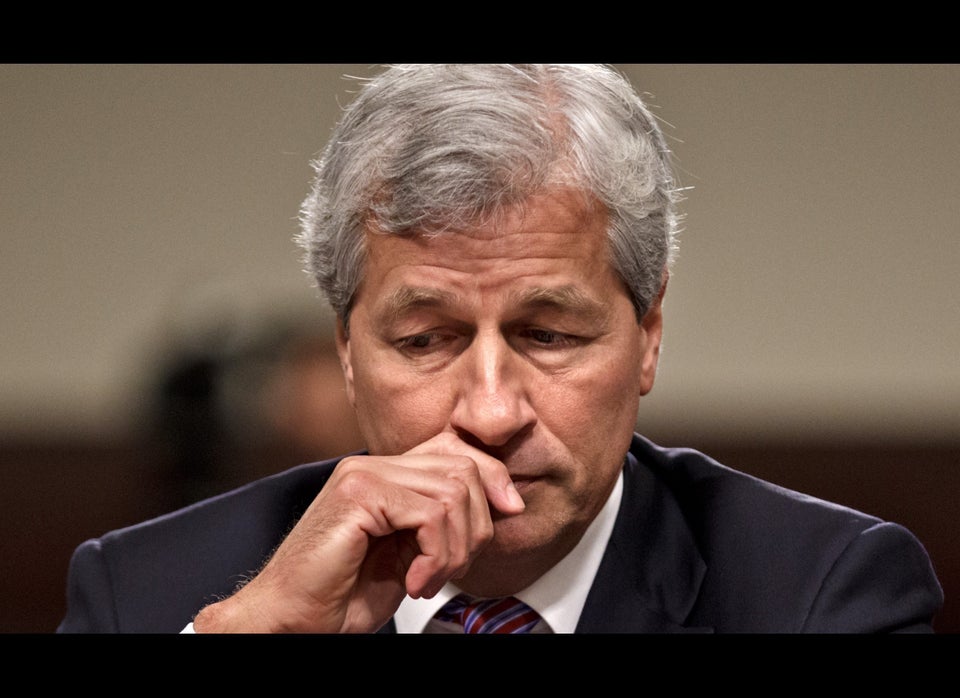
WASHINGTON -- Republicans are casting the latest battle over the nation's debt ceiling as a bid to win certainty in America's budget-making. But to Democrats, it looks like just another ruse in a strategy of manufacturing crises to win conservative concessions on things much of the country opposes.
The House GOP on Wednesday passed a bill that would raise the nation's borrowing limit for just 90 days, in an attempt to force the Senate to pass a budget resolution -- something it hasn't done in almost four years.
Senate Minority Leader Mitch McConnell (R-Ky.) summed up Republicans' thinking in a floor speech Thursday.
“Let’s get the process moving. No more brinkmanship. No more last-minute deals," he said.
But a review of the congressional standoffs that have occurred in the two years since the GOP took control of the House of Representatives paints a different picture. The Senate's failure to pass a budget has not forced the government to operate without money. But in almost every showdown, Republicans have threatened to do harm -- be it shutting down the government or defaulting on the nation's debt -- unless they were able to extract spending cuts from Democrats.
Some Democrats are arguing that the GOP’s strategy has become all too routine. And with looming fiscal battles over the automatic spending cuts that are set to kick in on March 1 and the expiration, on March 27, of the continuing resolution currently funding the federal government, they’re calling on House Republicans to put an end to what they perceive as a concerted effort to set up one crisis after another.
Senate Budget Committee Chairman Patty Murray (D-Wash.) on Wednesday said Republicans face a choice to either “have a budget debate in the Budget Committees” or "negotiate the issue lurching from crisis to crisis."
"For years, Congressional Republicans have used every crisis they could manufacture to litigate the federal budget outside the regular budget process without any regard for the impact of their actions on workers and the economy,” Murray said in a statement. “From threats of government shutdown each time an appropriations bill was about to lapse, to the artificial debt ceiling crisis of 2011 that required the Budget Control Act, to the year-end fiscal cliff brinksmanship -- Republicans have time and again pulled budget negotiations out of the Budget Committees in ways that rattled the markets, hurt the economy, and increased uncertainty."
Michael Steel, a spokesman for House Speaker John Boehner (R-Ohio), responded by placing the blame on Democrats, contending that the Senate's failure to pass a budget since 2009 has left Republicans with few options.
“Senate Democrats haven't passed a budget in nearly four years -- so 'outside the regular budget process' was our only option. Sen. Murray has only herself and her party leadership to blame for that," Steel told HuffPost.
Still, the pattern of a Congress that governs from crisis to crisis is now all too familiar -- and predictable. The trend goes something like this: As a deadline approaches, Republicans repeat their calls for spending cuts. Democrats accuse Republicans of hostage-taking. A short-term agreement is then reached that averts economic calamity, but ultimately kicks the can down the road for yet another fight.
Jared Bernstein, a senior fellow at the Center on Budget and Policy Priorities, said in an interview that Congress has been navigating its way from one manufactured crisis to the next in order to paint the government as dysfunctional. This distracts from the real economy, he said, which is in need of serious policymaking.
“These crises look to me like they're generated by folks who have a very aggressive anti-government agenda and it's in their interests both for government to appear dysfunctional, or even be dysfunctional, as well as to create national alarm about deficits and debt,” Bernstein said.
Bernstein, who served as the chief economist and economic adviser to Vice President Joe Biden from 2009 to 2011, pointed out that the debt ceiling itself has been raised nearly 80 times since the 1960s without drama or delay. The only times the nation has found itself on the brink were in 2011 and currently, due to efforts to extract spending cuts from the president in exchange for raising the debt ceiling. The fiscal cliff and the fight over sequestration, the automatic cuts to defense and domestic spending now scheduled to take effect in March, are also crises manufactured as a parliamentary tactic, Bernstein said.
And after all the hullabaloo to avert the fiscal cliff -- which saw Congress vote between Christmas and New Year’s for the first time in over 40 years -- the end result was a bill that left members of both parties dissatisfied and delayed the $1.2 trillion worth of sequestration-related cuts by only two months.
The fiscal cliff battle was preceded by a series of standoffs that would have once occurred years apart but now seem to take place within months of each other.
In July 2011, a partial shutdown of the Federal Aviation Administration left 4,000 FAA employees furloughed and halted over 200 construction projects.
That same year, a standoff over the debt ceiling brought the country to the brink of default. After much fighting and political brinkmanship, a deal was reached that put in place the sequester. But the job market suffered from the impasse, and the crisis will cost taxpayers an estimated $18.9 billion over 10 years.
Similar fights took place over the highway bill, which threatened the jobs of hundreds of thousands of construction workers, and thepayroll tax cut, which put the benefits of millions of Americans at risk.
Economists say that the implications of governing from crisis to crisis can be severe. The strategy creates economic pessimism, which in turn leads consumers to cut back spending and businesses to curtail hiring. It also causes investors to sell off assets and flee to Treasuries, which has the ironic effect of driving down interest rates, and therefore the nation's debt servicing costs. But the pathway toward fiscal sustainability doesn't have to be this complicated.
“There are no crises other than the ones that Congress is manufacturing,” Bernstein said. “It'd take another $1.4 trillion in deficit savings to stabilize the debt over the next 10 years -- a functional Congress could easily handle that.”
Michael McAuliff contributed reporting.
